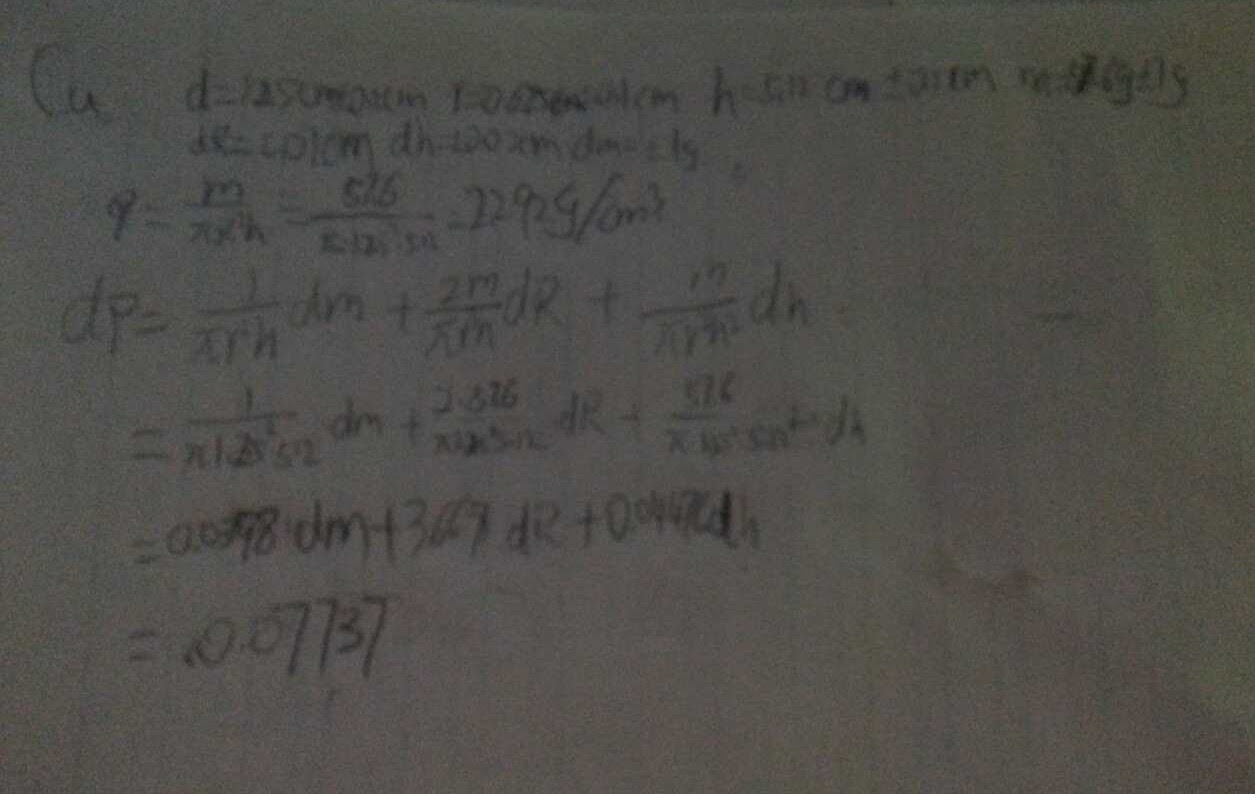First of all, we have three different metals : Aluminum(Al), Copper(Cu), Iron Ferrum(Fe).
And we already measured all the data(like the picture, there are diameters, heights, and masses of metal) about three metals.

There are some formulas that we already know for calculating the density of metal, Therefore, we also need to calculate the propagated error in each of our density measurements because of Propagated uncertainty.

There are pictures about calculations :
 |
| There are calculations about the density and propagated of Al. For this Al, our measurements are within the experimental uncertainty of the accepted values. |
 |
| There are calculations about the density and propagated of Cu. For this Cu our measurements are within the experimental uncertainty of the accepted values. |
 |
| There are calculations about the density and propagated of Fe.For this Fe our measurements are within the experimental uncertainty of the accepted values. |
Part 2 : Determination of an unknown mass.
First, we need to get some spring scales, and an unknown mass. Set up two clamps onto the edge of a lab table as the picture, with a long rod in each.

Second, we measured the angles and record the scale readings, and we also estimated the uncertainty in your angle readings and scale readings.
There are some formulas by Newton's laws which is for calculating the mass of the unknown mass, And we also need to use our known uncertainties to calculate the propagated uncertainty in the calculated value(Need to know that whenever our calculus, our dθ has to be in radians, not degrees.).

There are calculations :
 |
| our measurements are within the experimental uncertainty of the accepted values. |
Then, use a different set of angles and a different hanging mass, do all steps again.
we got new data like the above picture:
.JPG)
For this new mass m2, there are calculations like the picture:
 |
| with a different set of angles and a different hanging mass, our measurements are still within the experimental uncertainty of the accepted values. |
However, all of our measurements are within the experimental uncertainty of the accepted values
.JPG)
No comments:
Post a Comment